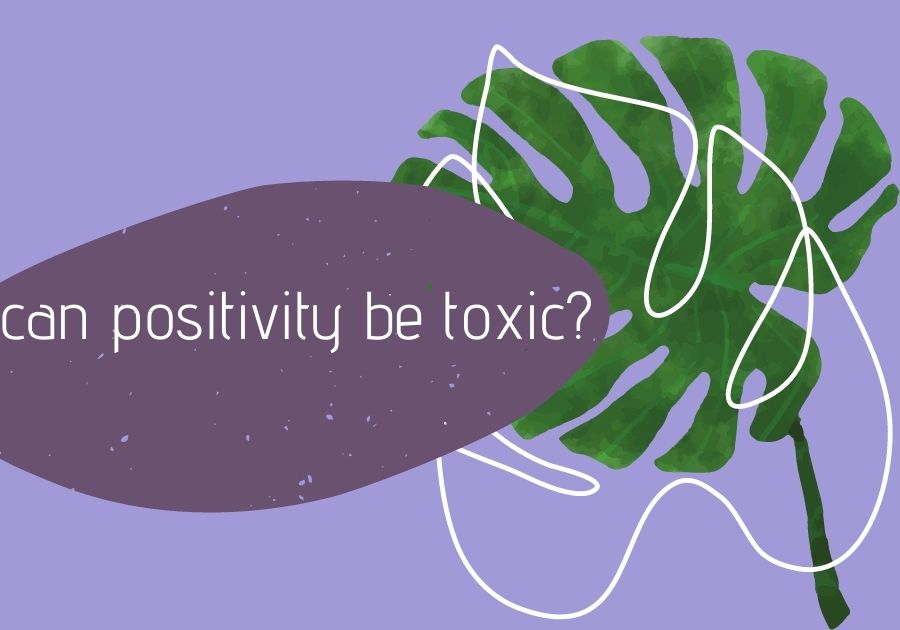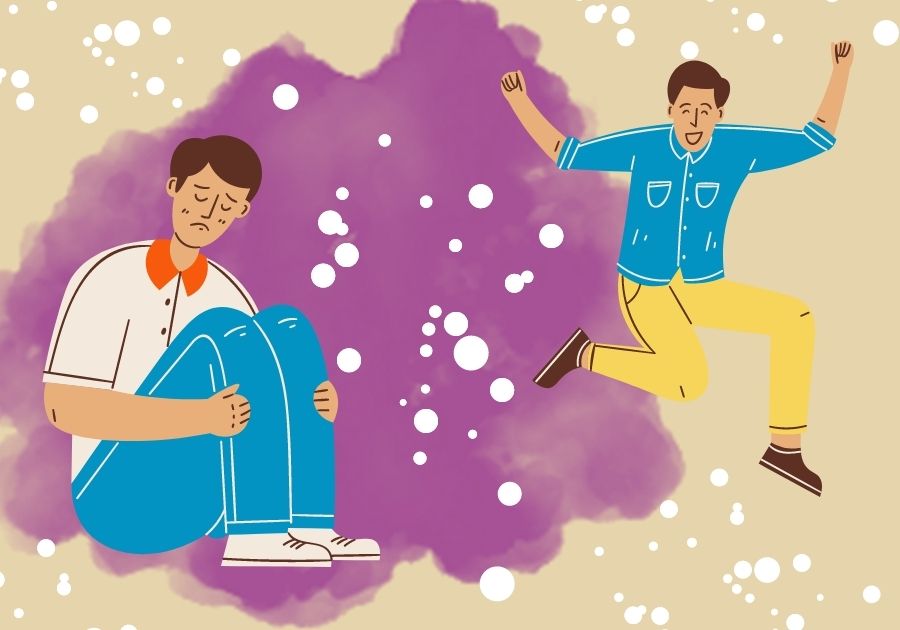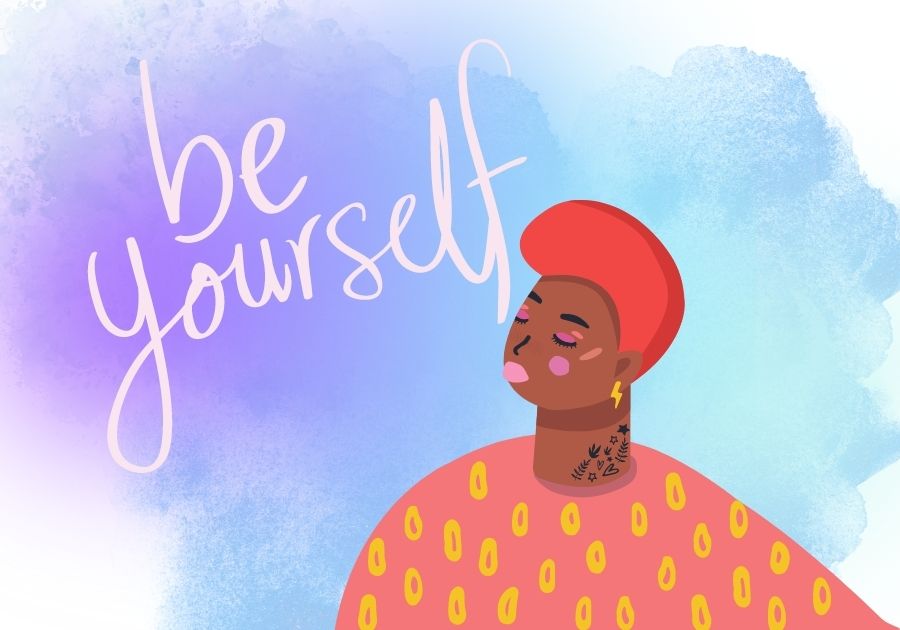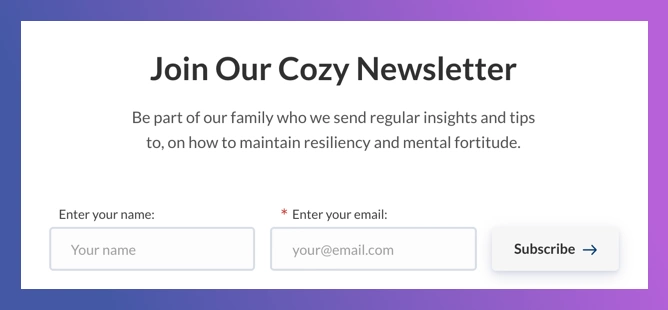The True Cost of Positive Thinking: Why It Can Be Overrated and How to Create a More Authentic, Effective Version

Positive thinking has become part of everyday life, with benefits such as high energy levels, better stress management, faster recovery from injury or illness, lower rates of depression, better physical and mental health, and a better quality of life. Positivity can be a very powerful tool for focusing on things that can work in your favor; of course, that doesn't mean that your problems can be eliminated just like that. By maintaining a positive attitude daily, we can better manage the unfortunate incidents that may occur since they seem smaller or at least more manageable when we see them positively.
Summary of contents
1. How can Positivity be Toxic?
2. What is Genuine Optimism?
3. Toxic Positivity: Characteristics
4. Is Toxic Positivity a nowadays phenomenon?
5. What does Toxic Positivity sound like?
5. What does Genuine Optimism sound like?
6. Ways to put Genuine Optimism in your life
7. In conclusion
How can Positivity be Toxic?

While the idea of being positive may seem like a great philosophy, the truth is that it isn’t always the best approach. Imagine positivity as a narrative that aims to make you feel good and see the positive side of things. That sounds perfect.
However, a strong approach criticizes this view and says that positivity can become toxic, as it is essentially a denial of acknowledging the facts of a difficult situation. Imagine, for example, whenever a problem arises, you try to deal with it by saying "everything will go well" but without getting into the process of examining the problem and finding possible solutions. Being positive seems to be morally good and acceptable, so an attempt to deal with emotions is categorized as negative. Toxic positivity can be a mask to hide your negative emotions in a mentally healthy way and, therefore, affect your mental health in a harmful way.
It is possible to silence the human emotional experience if certain emotions are frustrated and suppressed. Reality has many obstacles, and it is perfectly human for me to be anxious and preoccupied with issues in our lives. Toxic positivity can lead to unrealistic expectations and, therefore, we cannot adjust to the actual situations. By pretending to see the positive aspect each time, we deny the validity of an authentic human experience, even if it is sometimes uncomfortable or distressing.
What is Genuine Optimism?
A solid antidote for toxic positivity from mental health professionals is called genuine optimism. In this case, the basic idea is to maintain a positive attitude without canceling and denying the whole emotional spectrum. Οptimism is a more profound emotional state. It is about accepting and balancing the seemingly conflicting emotions we may feel in a difficult period. This acceptance releases the tension created when we do not recognize or want to avoid the feelings caused by a negative situation.
In this way, our optimism becomes genuine and is not related to a false view of the situations in our lives. We treat the situation, that is, as it is, and let ourselves go through all the stages of its processing.
Therefore, it turns out that the two words we use so often and in every context are entirely different from each other. Read on to find out the exact difference between toxic positivity and genuine optimism.
Toxic Positivity: Characteristics
Some of the most common expressions of toxic positivity that we may not realize include:
- You hide or conceal your true feelings
- You try to "just get over it" by rejecting negative emotions
- You feel guilty about your feelings
- You avoid situations that bother you with a simple "this is how things are" or "these things happen."
- Feelings of shame or frustration because you can not constantly maintain your "optimism."
- You degrade other people's experiences
- You try to give a positive perspective to situations (e.g., "it could be worse") instead of validating an emotional experience
- Reduce the negative experiences or feelings of other people with "feel good" expressions that conceal the situation, canceling the anxiety they may feel
- Attempt to complete your daily functions "as if nothing is happening," rejecting everything you feel at the moment
- You embarrass or punish others for expressing frustration or anything other than positivity
Is Toxic Positivity a nowadays phenomenon?
Considering the rapid development that has been established after the discovery of the internet and the modern problems, the movement of "stay positive" has spread and penetrated every medium of our time. Living in a world of pandemics, in a world of war, in a world of economic and social crisis, people are trying to get caught up in something and keep their hope. People are looking for ideas and means to manage their negative emotions and overcome the loneliness and helplessness they feel in these moments.
In addition, the issues that concern people often can be so complex that they are preferred to be avoided and processed. Thus, they subconsciously push themselves to believe that everything is going well.
The attempt to communicate and share these issues is avoided, and there is a familiar silence and oppression. This encourages individual management, which is more like an illusion and leads to isolation. Social relationships are less honest and meaningful, and positivity is like a defense mechanism.
Another tool that has helped boost toxic positivity is social media. By scrolling through the homepage of Instagram or Facebook, you will come across various posts that include positivity quotes or "instructions to stay positive." It is as if positive thinking has become the new black. These instructions are not only superficial and put the problems under the rug, but they are also like simulating all the problems and promoting a common solution of all kinds and quality of issues.

What does Toxic Positivity sound like?
If we can record the usual expressions that we can hear in everyday life from those around us and are expressions of toxic positivity, we would refer to the following:
1. ''You'll get over it.''
2. ''Just be positive.''
3. ''Just smile.''
4. ''Stop being negative.''
5. ''Be grateful it isn't worse!''
6. ''It's not as bad as it seems.''
7. ''Don't give up.''
8. ''Think happy.''
9. ''Everything happens for a reason.''
10. ''Good vibes only.''
Our repressed emotions are somehow buried inside us, which can create emotional, psychological, or even physical dysfunctions. As a counter-proposal to toxic positivity, Genuine Optimism can promote quality and a more effective way of dealing with the issues that concern us.
What does Genuine Optimism sound like?
1. ''This is hard. I'm trying to understand what I am feeling.''
2. ''We'll get through this together.''
3. ''Do you want to talk about it more?''
4. ''It is probably tough to be positive now.''
5. ''I am here for you.''
6. ''I love you through all your emotional stages.''
7. ''Do you need a hug or a tissue?''
8. ''It takes time to heal. There are no ups without the downs.''
Ways to put Genuine Optimism in your life
Genuine Optimism includes validation and support for yourself and others. It involves having an optimistic outlook on life and the world and being self-aware of the reality of life. Genuine Optimism has to do with feeling hopeful and confident about what the future holds, feeling that there is a good chance that what you want will happen, and not being disappointed if things do not turn out the way you want. Instead, learning and feeling that you always have something to gain when things are different from what you want them to be. In short, a way to be grateful for what is happening.
How to give space to Genuine Optimism?
Realization
It is tough to introduce a new chapter in your life if you do not leave someone else behind. So, to move from toxic positivity to sincere optimism, you must learn to distinguish the characteristics of the two and make a healthy choice for yourself.
As with many behavioral patterns, recognizing toxic positivity can be the first step in avoiding it. Self-observation is the key to awareness and subsequent transformation.
Recognize your thoughts and expectations about situations you are experiencing. How absolute are you? How hard do you become towards yourself? How much time do you take to share your true feelings about a situation before you start managing it? Observe by writing down your thoughts and feelings before and after an event and then see; how close are they to Genuine Optimism?
Giving time
Time is a concept that is most often associated with a "must" and a rush. We often want to accelerate our growth and achieve the desired result as soon as possible.
But we forgot that the concept of time is false and subjective. This means that it should not exist, but the emphasis should be that everyone has their own time to evolve and learn to get rid of a toxic pattern and live with new elements, healthier in terms of themselves, their life, and social relations.
It is essential to give yourself time to experiment with the characteristics of sincere optimism and not to get to a point where it comes out as a natural way of looking at life without the oppression and pressure that comes from social comparison.
Don't be afraid to say you are not feeling fine

Do not be afraid to say that you do not feel well. Another critical step to getting closer to sincere optimism is not to be scared to experience negative emotions and express them. With that being said, you need to be honest with yourself first and then keep that honesty in your social relationships. In particular, when you feel bad about a situation, avoid trying to suppress that feeling and fooling yourself that everything is fine. Things are not "all right" for you now, and you have to respect that. Do you feel angry? Communicate with a person and break out in a healthy way, such as doing strenuous exercise. Do you feel sad? Let your tears flow and cancel your obligations for that day, giving space and time for your negative emotions to be experienced.
Realizing and giving life to these negative emotions, the positive emotions that follow make more sense and make even the bad moments seem worthwhile.
Avoid comparing situations
In introducing genuine optimism into your life and your vision, it is essential to recognize the uniqueness of each experience. For example, it is very critical and self-centered to constantly compare situations and evaluate them based on the amount of emotion or misery. In particular, when someone describes to you why their day was wrong, do not get into the process of thinking and saying something like, "Slow down, it was worse for me." Everyone has their way of responding to things, and you have to respect that.
When someone tells you that their day was difficult, it means that it was difficult; there is no question. Instead of saying "this person should think positively," what is preferable to speak in such situations is first, to recognize and listen to their unique situation (''I imagine it will be tough for you'') and secondly to be interested and ask how this person prefers to manage the problem you or how you can help.
Surround yourself with genuine, empathetic people
The way to get a new approach is to hang out or connect with people who have that approach. Surrounding yourself with people who believe and practice genuine optimism can make the path for you to genuine optimism more clear. This way, you can more easily put what you want to do into practice. Still, you may learn a lot of important information about this new approach and be inspired for your personal development and the quality improvement of your social relationships.
Work on acceptance
Genuine Optimism is directly related to the value of acceptance. When you learn to see things more openly and accept any version-outcome of a situation, you have incorporated genuine optimism a little more into your life.
Acceptance is very beneficial for our relationship with ourselves and our connection with others. By learning to accept ourselves as we are, we automatically know to forgive ourselves for mistakes and not develop self-hate and feelings such as frustration. Acceptance is when we assure ourselves that we will do whatever the outcome is, even if it is the opposite of what we expect.
This does not mean that we should not have desires and look forward to something but not take things too personally and stay open to all possibilities. It means moving on to finding other alternatives and taking the lesson from the circumstances.
When we learn to accept ourselves, we can get the situations around us and be there for anyone who needs us without any criticism. During discussions with other people, it is essential to be honest with them and optimistic about their goals; we can remind them that we will support their decision or move and accept them as they are. The feeling that someone accepts you gives you much greater healthy positivity and boost.
Encouragement to be yourself

After all, when you are faithful to your core and your true self, it is easier to have a truly optimistic outlook on life. This can work in both directions: when you are your true self, you have faith in yourself, and you can more easily believe and understand the human side of any condition that does not end up being perfect.
On the other hand, being honestly optimistic can bring you closer to the elements that make up yourself and start learning and experimenting with you. For example, when you remain optimistic and say to yourself that "whatever the outcome, whether I pass the exam or not, I know that I gave my best and that I will try again," you learn for yourself that you have a lot more strength and perseverance within you than you thought you had.
In conclusion
A positive mindset creates the conditions that allow you to be optimistic.
In conclusion, being genuinely optimistic has in it a positive mindset, which, in its turn, derives from allowing us to experience every feeling and having the belief that everything, in the end, is bearable. We have been trained to believe that having negative emotions is bad for us. We have been taught to suppress and bury our feelings rather than express them.
What happens when we release the hold of those suppressed emotions? Do we feel better?
Of course, we do! There’s also a downside to releasing our suppressed emotions: feeling the pain coming out of them. The truth is, when we allow ourselves to feel, we open up to pain. We open up to pain because we all have our vulnerable sides. As time passes, we become more receptive to feeling pain and come to the paradox of recognizing that pain is inevitable. Pain is the pathway to our freedom.
Get to know us more!
If you would like to get involved in this initiative and be a part of history in the making, feel free to shoot us an email at contact@buddyhelp.org or browse our website to discover all of the many ways you can join our BuddyHelp family and make a difference in the world.
